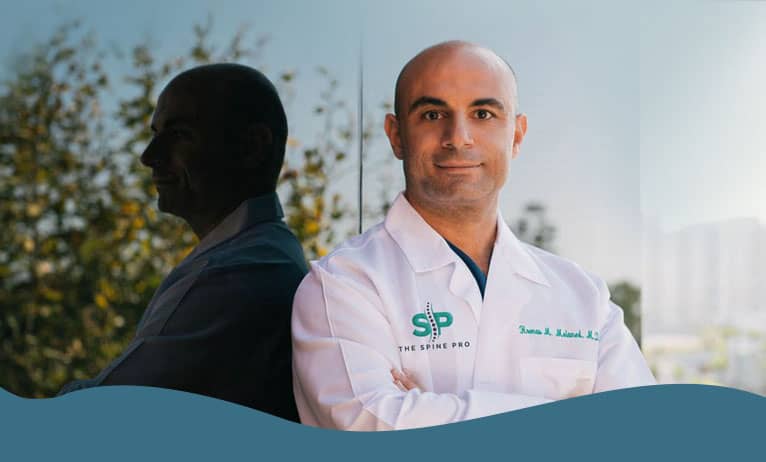What is the Treatment for Spinal Bone Spurs?
Bone spurs are small bony growths that form on the edges of vertebrae. Bone spurs are your body’s response to the presence of inflammation or injury to cartilage, tendons, joints, and ligaments. Bone spurs are usually caused by arthritis and can cause pain when they rub against nerve roots or the spinal cord. Fortunately, there are several treatments for bone spurs.
What Causes Spinal Bone Spurs?
The most common cause of bone spurs is osteoarthritis. As osteoarthritis breaks down your bone cartilage, your body attempts to repair the damage by creating bony growths. Spinal bone spurs are also commonly found in those with degenerative disk disease. Spinal stenosis, a narrowing of the spinal canal, is another common cause of bone spurs in the spine.
Who is Most at Risk?
Spinal bone spurs are typically found in those aged 60 and older. However, they can occur at any age. Bone spurs are frequently found in those who have joint pain, arthritis, or degenerative disk disease. Athletes and those who live a physically active lifestyle are also at risk of developing bone spurs due to repetitive impacts on their joints.
Symptoms of Spinal Bone Spurs
Most of the time, bone spurs are asymptomatic and painless. However, they may cause pain and stiffness in the joints in some cases. If a bone spur grows large enough in the spine, it can press on nerves causing pain, tingling, weakness, or numbness in the legs. Other symptoms include:
- Reduced range of motion
- Tendinitis
- Bumpy or knobby joints
- Muscle spasms
Diagnosing Spinal Bone Spurs
If you are experiencing any of the symptoms mentioned above, your doctor may order an X-ray or MRI to aid in diagnosis. Ultrasound and CT scans are also used to diagnose this condition. When determining the severity of your bone spurs, your doctor will look at the size and location as well as how far they protrude from the spine.
Ways to Treat Spinal Bone Spurs
When treating bone spurs, your doctor will look at the symptoms you are experiencing and how severe they are. The goal of treatment is to minimize pain, stiffness, weakness, and numbness. If bone spurs are causing you discomfort, the first step to treating them is usually to take over-the-counter anti-inflammatory medications to reduce pain and swelling.
Epidural corticosteroid injections may help treat bone spurs by reducing inflammation and stabilizing your spine.
Physical therapy may also help treat bone spurs by strengthening the muscles around the joint and improving range of motion. In addition, simple lifestyle changes such as switching to an anti-inflammatory diet and quitting smoking may also help relieve symptoms and help reduce inflammation that is associated with spinal bone spurs.
BESS Surgery
If a bone spur is pressing on a nerve or pressing into the spinal cord, surgery might be necessary to remove the spur. The Spine Pro can help treat spinal bone spurs through a minimally invasive approach called biportal endoscopic spine surgery (BESS).
To perform BESS, your surgeon will make two small incisions roughly a quarter to a third of an inch. These incisions are called portals. Next, the surgeon will insert a tiny fiber-optic camera through one portal (The Viewing Portal). This portal allows the surgeon to see inside your spine without opening your back. The other portal is the working portal, which provides access to your spine. The surgeon uses special instruments to remove bone spurs or other disc material that may be causing pain through the working portal.
Since BESS is a minimally invasive surgery, your recovery tends to be faster and more comfortable than traditional spinal surgeries. In addition, BESS allows most patients to go home the same day and begin physical therapy in as little as 2 to 3 weeks.
Contact the Spine Pro Today
Dr. Hooman Melamed at The Spine Pro offers a patient-first approach to minimally invasive treatment options. If you are experiencing any of the symptoms associated with spinal bone spurs or other spine-related conditions, call (424) 21-SPINE or make an appointment today.






